Bodies, Rest, and Motion
Since 2018, photographer Jonah Rosenberg has been documenting the intensely physical, existentially inquisitive works of visual artist and choreographer Matty Davis. Here, they share the story of their creative collaboration.
"Die No Die (The High Line)," 2024, co-commissioned by Frieze and High Line Art.
Jonah’s story
I originally met Matty through his brother Mark (also a photographer). I had never seen anything quite like his work before. I could see the influence of Matty's youth spent skateboarding and rollerblading not only in his tolerance for pain but also in the speed and force of his movements and in their thankless repetition.
It was also clear that he viewed photography as a central part of his work and was interested in collaborating with photographers who would bring a clear voice to documenting it. I was still mainly assisting at that time, and if memory serves me correctly, I emailed him and basically said, "I think your work is really cool. I'd love to photograph you,” and things went from there.
The very first time we worked together was in 2018. He was looking for visual documentation of a new work so that he could share it at a talk he was giving. From there, each of our shoots came to be for slightly different reasons. Some had a very specific goal in terms of output and use-case for the images; others were more about Matty having an opportunity to practice or refine something and for us to experiment together.
"Movement research for Die No Die," Prospect Park, 2020.
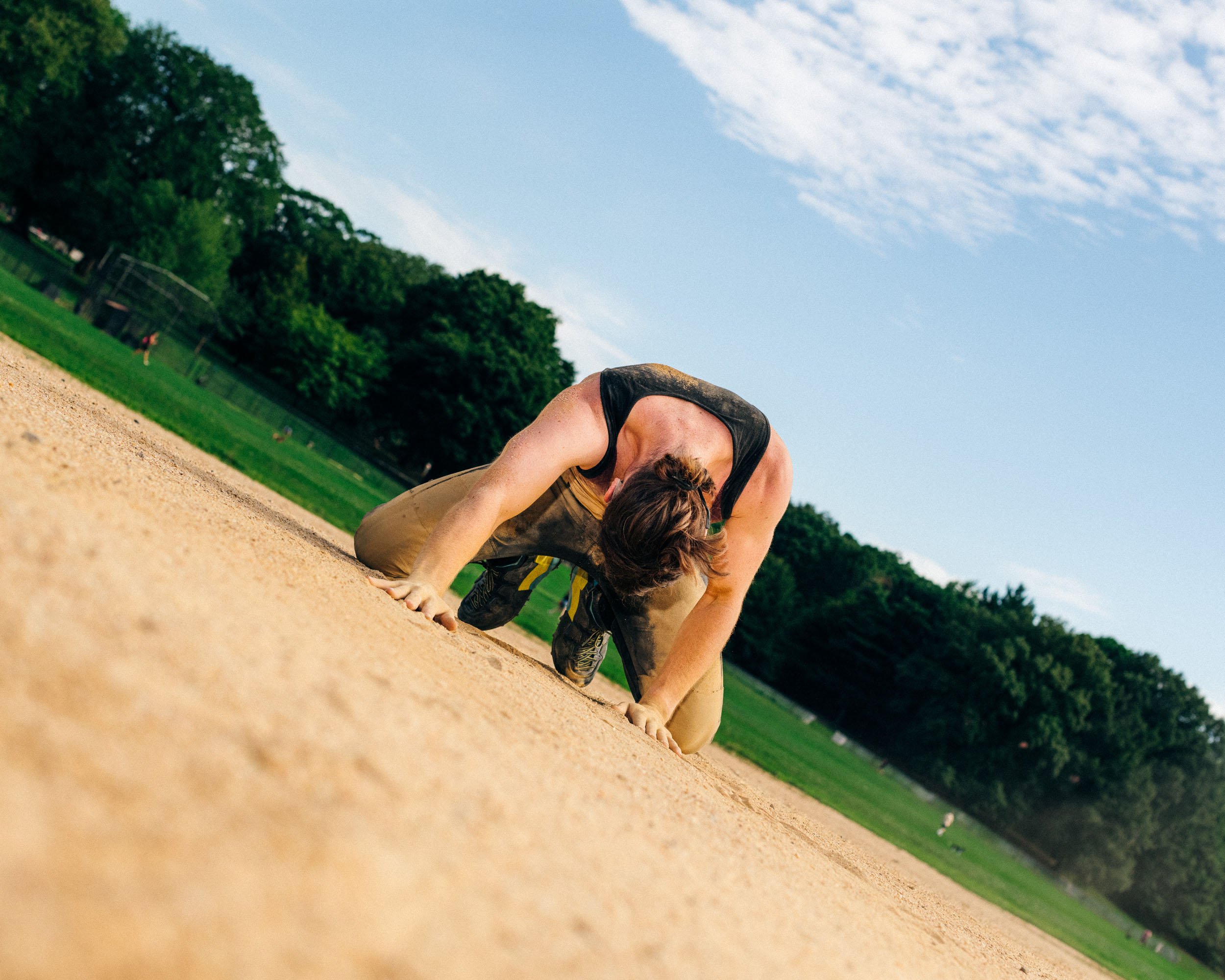
"How Shall Thou Resolve Thyself" (2021) was conceived by Matty to be a "performance arranged for print" and culminated in a limited-edition artist book. Of all the things we've done together, this one was probably the most premeditated. Matty created a set of instructions for the performers, and over the course of around four months, I photographed each performer following those instructions at the same location in Brooklyn. Matty and I talked at length beforehand about how we wanted to approach the repetitiveness, how identical we wanted the images to feel, the slightly clinical feel of the frames, etc. The book also included a short piece I wrote about the experience of making the photographs.
The “Carriage Bearance Severance” images from 2023 were made to promote a performance Matty was doing with his longtime collaborator Ben Gould. The images we made in Prospect Park in 2020 and in 2023 depicted different stages in the development of what would become "Die No Die," a piece Matty has performed in the U.S. as well as abroad and which Matty later adapted for his Frieze/High Line commission in 2024.
‘My work can be exacting. It can ask a lot from the people involved.’ —Matty Davis
“Carriage Bearance Severance,” 2023.
Our process together tends to be fairly reactive and on the fly. Matty might send me a cellphone clip of his choreography beforehand, and my gears will start turning about how I want to photograph it. I'll try to understand what the essence of the movement is or where its critical moment is. So often, though, the plan I make is abandoned once we're (literally) on the ground together. I'll watch him run through something and see it and feel it in a way that's only possible in person. I'll see the way he launches upward and realize I've got to get beneath him. Or he'll run circles around me and I'll begin spinning with him.
Matty, to his great credit, always seems to trust me implicitly and is always open to how I see and represent his work. Even though it's his practice that provides the impetus for our work together, it has never felt as though he's my client, demanding I make a particular sort of image. Instead, it feels as though he's extending a hand, inviting me to dance with him. —Jonah Rosenberg
Behind the scenes of Matty Davis’ “Die No Die (The High Line),” a work co-commissioned in 2024 by Frieze and High Line Art.
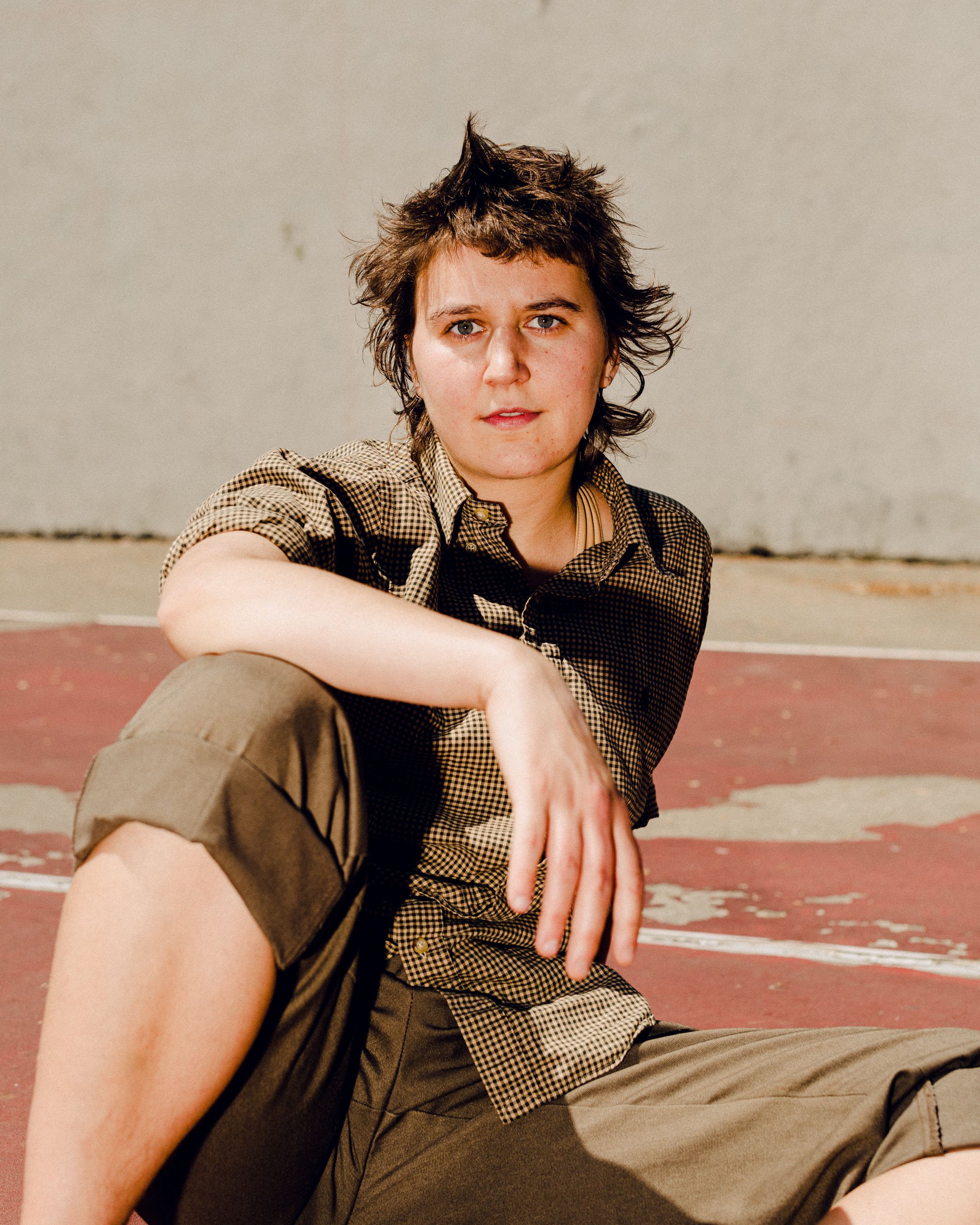
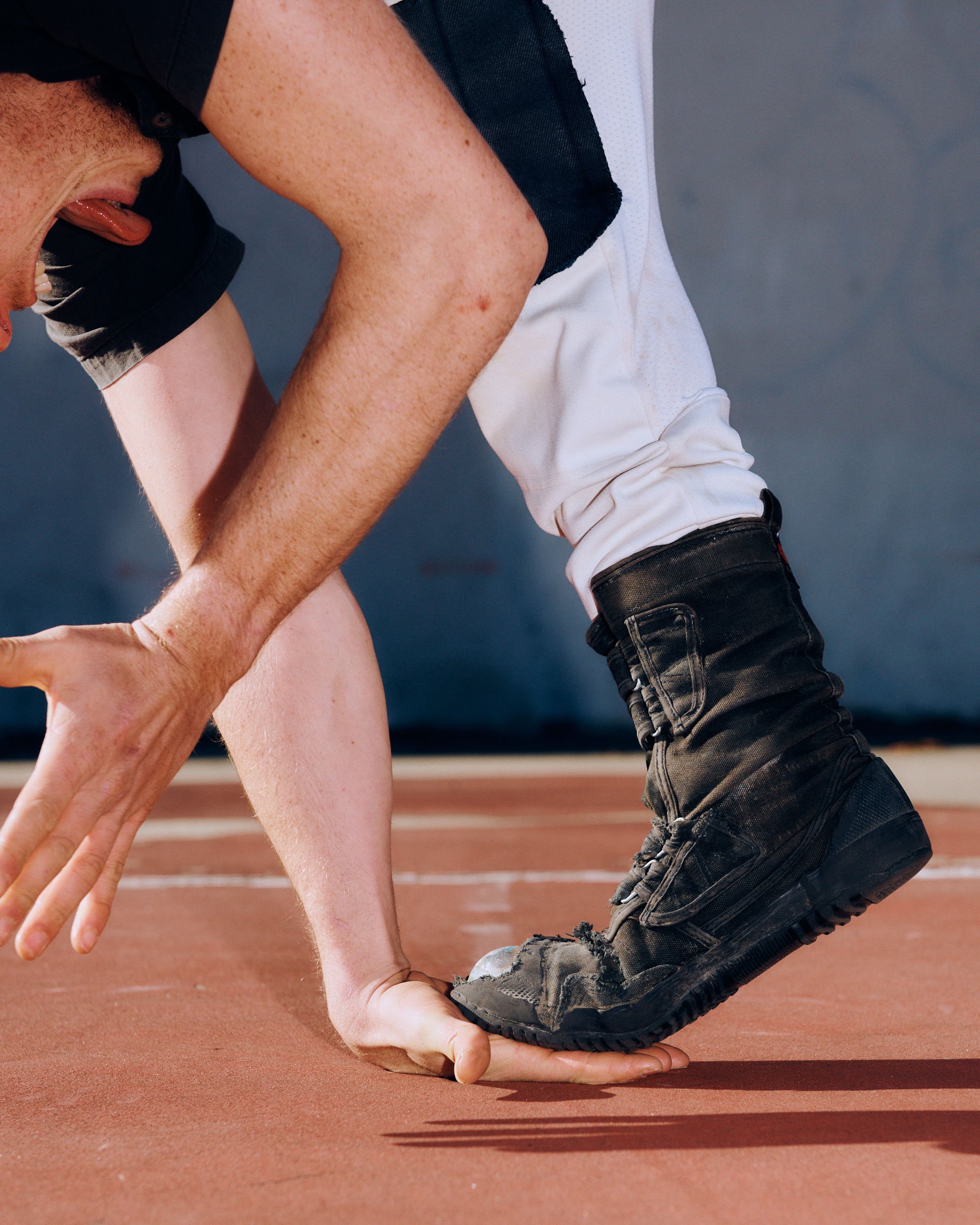
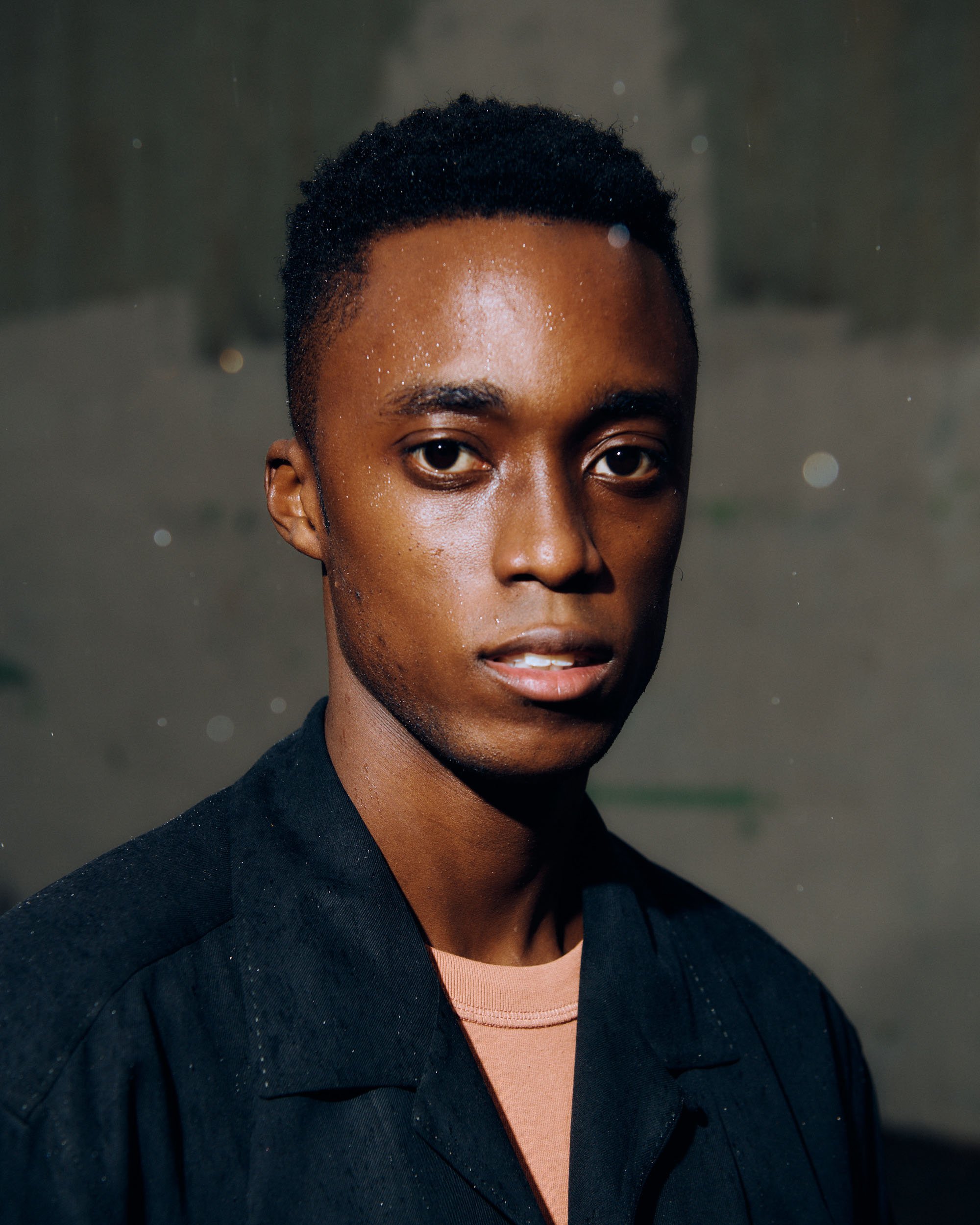
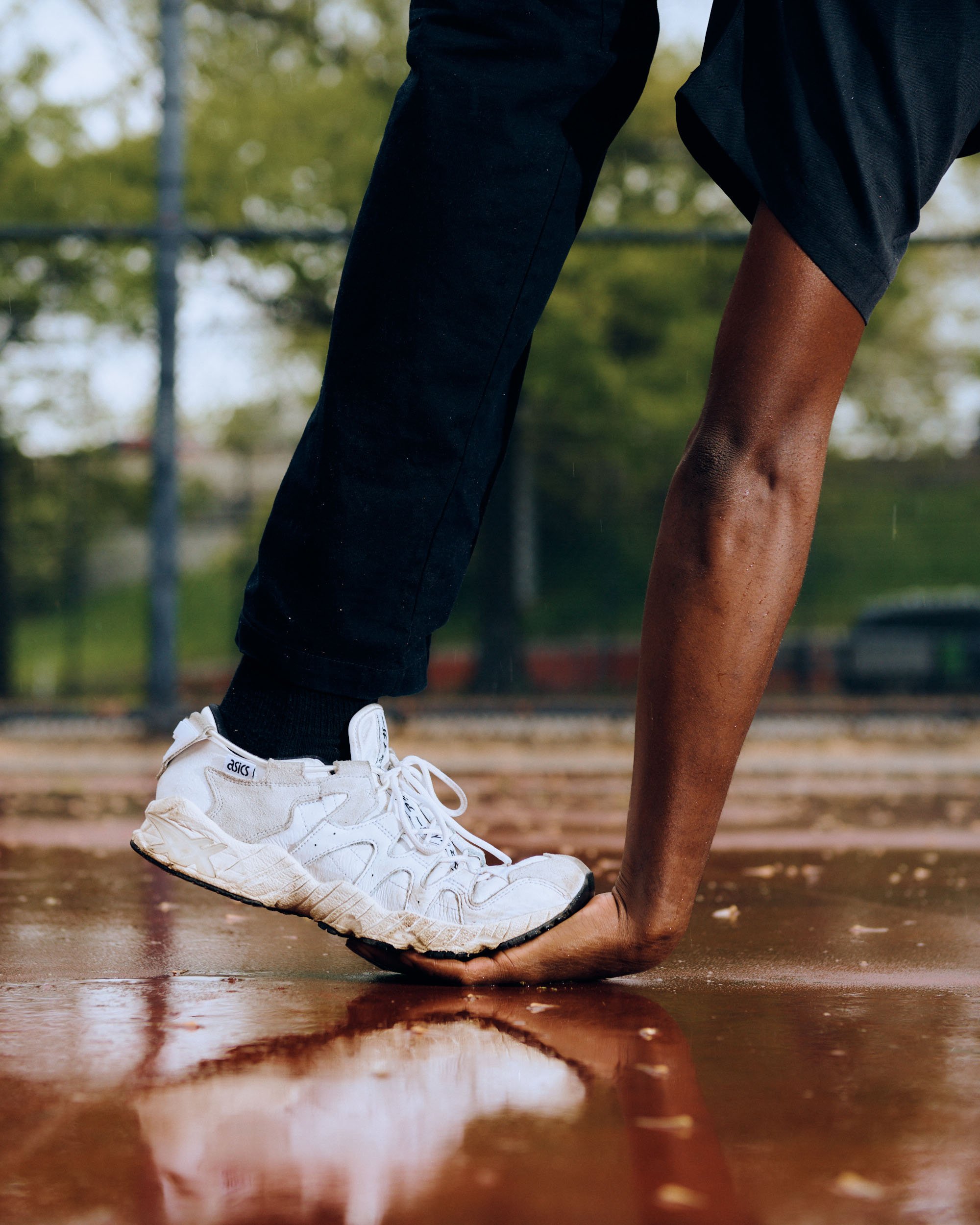


"How Shall Thou Resolve Thyself," 2021.
Matty’s story
Last February, on a frigid, icy morning, Jonah and I ventured from Brooklyn to the High Line to shoot some performance photographs for an installation I was commissioned to present upon that old, restored “lifeline of New York.” Looking at the weather forecast the day before, we discussed via text message how the presence of snow and ice—the visceral nature of skin and ice, skin reddened, ice flying, the body plowing snow—could meaningfully figure into the images. We were excited.
Out of the train, already cold, up the stairs to the High Line’s southernmost entrance, we were confronted with a fence: The High Line was closed due to inclement weather. As I cursed the fence and ranted about what I felt were unnecessary safety protocols, partially out of defense for feeling bad that I dragged Jonah all the way to the West Side of Manhattan, wasting his time, Jonah, with characteristic patience, generosity and grace, shrugged and told me to let him know when might be a good time to try again.
"Movement research for Die No Die," Prospect Park, 2023.
‘When photographing Matty’s work, I'll try to understand what the essence of the movement is or where its critical moment is.’ —Jonah Rosenberg
My work can be exacting. It can ask a lot from the people involved, whether that person is performing or collaborating on photographs or contributing a piece of writing. While guided by performance and choreography, my practice includes drawing, photography, books, installation, and video. I’m interested in trust, responsibility, sacrifice, and commitment, dynamics within the self and between oneself and other people that cast us into consequential, often high-stakes spaces of discovery, learning, and growth.
In spaces such as these, we quickly realize who our people are, who is willing and able to meet us there, the people with whom we can live the life we need to live. Over the last five or six years of working together on myriad projects—from mere process documentation, to publishing projects, to images designed for large-scale installations—from baseball diamonds to rooftops to iconic architectural structures such as the High Line, I can confidently say that Jonah is one of my people.
Over the course of the next couple of months, Jonah and I went back to the High Line, again and again, often enduring the cold, early-spring wind tunnels that rip across the High Line at 34th Street. I would repeat movements, dialing in my timing, the tonality, speed, or duration of a given bit of choreography; Jonah would shoot and shoot, dialing in shutter speeds, angles, his flash, the finicky rhythms of natural light. Both of us miners in the same cave, working together, chiseling into the unknown toward what we both know and don’t know is there. —Matty Davis
Jonah Rosenberg is a photographer based in New York. While he can find inspiration in just about any subject, he is especially drawn to photographing people who bring passion, intensity, and care to what they do—from workers, dancers, athletes, artists, and chefs to competitive dog trainers. His work has been published in The New Yorker, The New York Times, Monocle, The Wall Street Journal, and New York magazine, among others. Follow him at @jone_bone.
Matty Davis is an artist and choreographer based in New York City. His work has been presented nationally and internationally, from site-specific contexts (including mountain ranges, hurricane-churned shorelines, and private homes) to institutions such as the High Line, Frieze, the Art Institute of Chicago, the Dallas Contemporary, the Palais de Tokyo, and the Max Ernst Museum. He is the author of numerous books, and since 2021 has been trailblazing a new form, “performance arranged for print." Follow him at @mattywilliamdavis.
























